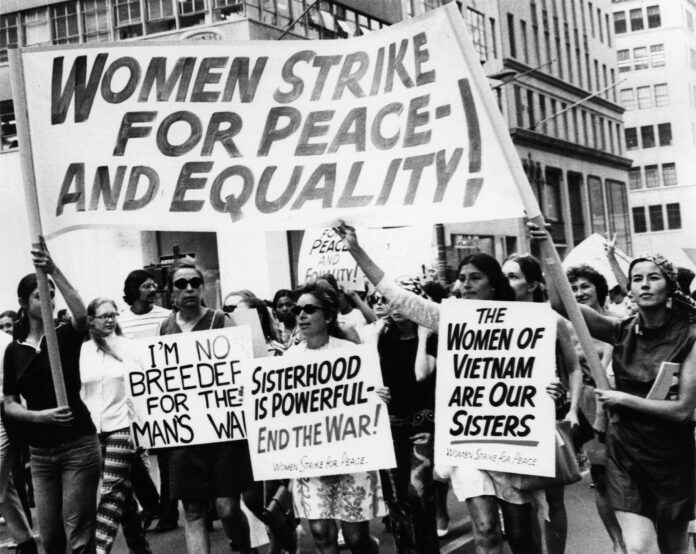Feminism, as a movement advocating for women’s rights and equality, has grown into a multifaceted ideology over the decades. Its evolution and subgenres reflect its expansive nature. However, in contemporary discussions, the introduction of the term “Mananism”—a proposed counterpart to feminism that seeks to advocate for men’s issues—invites a plethora of inquiries. To ascertain whether a man can indeed be a Mananist requires a deep examination of the implications and foundations of both movements.
Understanding Feminism: A Multi-Dimensional Movement
The scope of feminism encompasses a broad spectrum of ideologies, including liberal feminism, radical feminism, intersectional feminism, and eco-feminism. Each of these branches addresses distinct aspects of gender inequality and advocates for varying solutions. Feminism’s essential tenet, however, remains recognition and rectification of systemic injustices faced by women. The quintessential feminist discourse has often been framed around issues such as reproductive rights, wage gaps, and violence against women.
Additionally, contemporary feminism increasingly emphasizes intersectionality—a concept coined by scholar Kimberlé Crenshaw—which acknowledges that gender does not exist in a vacuum. It intersects with other identities, such as race, class, and sexuality, thereby affecting the experience of oppression. This nuanced approach reinforces feminism’s commitment to inclusivity and equity.
Mananism: The Proposed Counterpart
Mananism, although not widely recognized, aims to address and advocate for issues that disproportionately affect men. Concepts such as mental health, the high rates of male suicide, and social expectations regarding masculinity form the crux of such conversations. Advocates for Mananism argue that men also suffer from societal restrictions enforced by traditional gender norms. Consequently, the question arises: can men participate in this discourse actively without undermining feminist principles?
The Hogwash of Dismissal: Misinterpretations of Male Advocacy
Critics of the idea of Mananism often dismiss it outright, perceiving it as an effort to divert attention from women’s issues or to diminish the importance of feminism. This dismissal stems from a misunderstanding of the complementary relationship that feminist and masculinist discourses can have. Just as feminism arose in response to women’s oppression, a legitimate male advocacy movement recognizes that the rigidity of traditional masculinity can be detrimental to men and society at large.
In a society characterized by stereotypes of masculinity, men frequently grapple with pressures to conform to hypermasculine ideals—strength, emotional stoicism, and financial success. Such pressures can impede the emotional and mental health of men, resulting in societal ramifications that require urgent redress.
Potential for Synergy: Feminism and Positive Masculinity
The interaction between feminism and a potential movement like Mananism should not be viewed as a zero-sum game. Rather, holistic advocacy for both genders can yield synergistic benefits. Feminism underscores the necessity for dismantling patriarchal systems, thereby granting men the freedom to express vulnerability and authenticity. Conversely, a movement promoting men’s issues can enhance feminist goals by advocating for an inclusive understanding of gender that recognizes the limitations placed on men as well.
Encouraging Positive Masculinity: A Pathway Forward
A productive discourse surrounding men’s issues hinges on reframing conversations about masculinity. Positive masculinity does not prioritize one gender over another; instead, it advocates for a balanced perspective that appreciates men’s contributions to society while recognizing the need for sensitivity and emotional awareness. For example, initiatives that promote male involvement in caregiving roles challenge traditional perceptions of masculinity while also emphasizing collaboration and equality within domestic spaces.
Education, touchpoints in public health, and community engagement should be fundamental tools in nurturing this positive masculinity. Schools, for instance, can foster environments where young boys learn skills around emotional intelligence, establishing lifelong tools for coping and empathy. Interventions directed at men’s mental health can further facilitate understanding about vulnerability as a strength rather than a weakness. Such strategies align with feminist goals of establishing equitable gender dynamics.
The Intersection Between Feminism and Men’s Rights Activism
Men’s rights activism often emerges in opposition to feminism, with interpretations that vary from legitimate calls for reform to regressive backlash against women’s rights. This intersection presents challenges for those genuinely seeking to advocate for men’s issues without compromising established feminist principles. Critical voices within men’s rights activism—such as the focus on parental rights in custody disputes or advocacy against false allegations—highlight legitimate grievances but often become entangled in antagonism toward feminism.
Navigating this terrain necessitates careful consideration. Advocacy for men’s rights does not require a detriment to women’s rights nor should it adopt an adversarial tone. Instead, a reconciliatory approach recognizes shared stakes in combating systemic inequality across the gender spectrum. Rather than merely opposing feminism, a concerted effort toward gender justice calls for collaboration toward a more equitable society.
Conclusion: Embracing Inclusive Activism
As society evolves, the exploration of concepts like Mananism provides fertile ground for essential dialogues regarding gender relations. Men can absolutely engage in advocacy that promotes gender equity, provided it is rooted in a commitment to dismantling harmful stereotypes and fostering positive interactions between the genders. Efforts must focus on intersectionality—acknowledging both male and female experiences of oppression—and fostering partnerships in advocacy.
Ultimately, while men can identify as Mananists, it is imperative that such identification operates in concert with feminist aims. Creating a society where everyone—regardless of gender—has the opportunity to thrive defines the core of both feminism and the proposed Mananism. It is through these synthesis and mutual recognition that a more inclusive and equitable future can be forged.





























